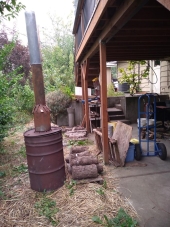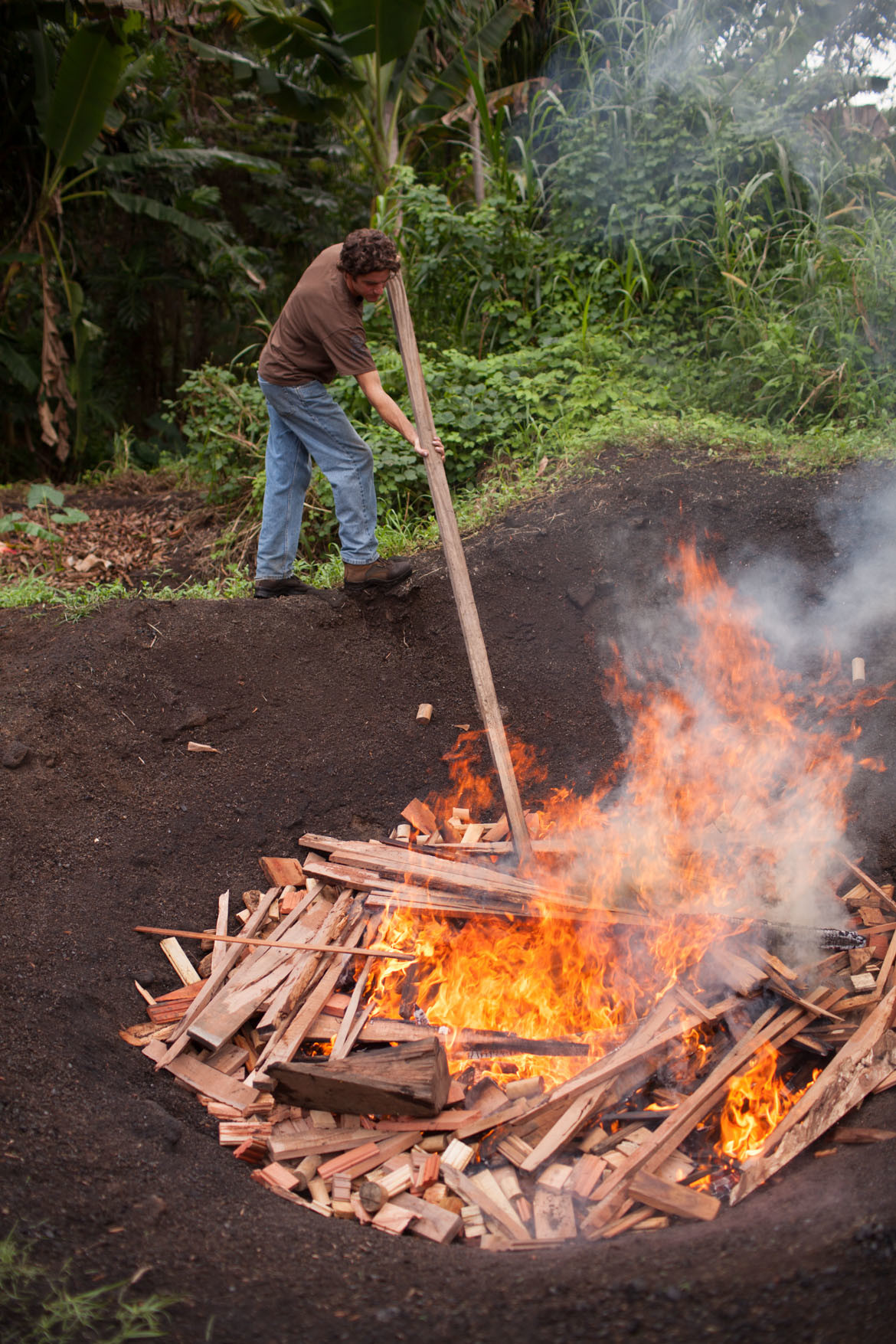Antonin chaozone wrote:The [torrefied] wood might ... do anything negative ?
Not that I am aware of.
Antonin chaozone wrote: reduce the fuel in case of wild fire. But if we could teach them...
Are you aware of the upside-down camp-fire build (many examples on youtube)? They are nearly smokeless, thus the attraction for campers.
Most burn piles are bottom-lit smoke bombs. But all that smoke is flammable and a missed opportunity. Permaculture design opportunity. Design your fire to employ the flame not just as a fuel reduction tool, but also as an afterburner to consume the smoke. If air quality is a concern in the area, folks who want to be good neighbors are the best candidates to approach. They have the incentive to raise their pyromantic skill level to have nearly smokeless fires.
Bonus: Because the BTU's of what would be smoke turns to heat, the top-lit pile is going to heat-distill the wood gas from the char more efficiently and quicker, so, bonus, the potential char yield is much higher than for a bottom lit pile.
Top-lit piles takes a little more effort to construct and manage, but the extra effort is worth it.
https://biochar-us.org/sites/default/files/learning/files/Smoke-Into-Biochar-flyerfinal.pdf
You don't have to water quench to get the charcoal, although that is ideal; you can rake the embers out to the fringes, away from the most heat.
You can quench with dirt like when closing an ember-bed cooking pit.
After the potential biochar yield, the other collateral benefit of a top-lit pile is that, with the heat center further up in the pile, not as much of the underlying soil gets sterilized. You can see the difference in plant and fungi recovery for many years afterward. If the woodlands are being used for grazing and foraging for mushrooms, better productivity help might motivate adoption.
It may take 3-generations for upside-down burn pile fires to supplant bottom-lit smoke bomb piles for fuel reduction, but the practice is so superior, the potential for adoption is high. Just have to find the creative community needed to start it off.




